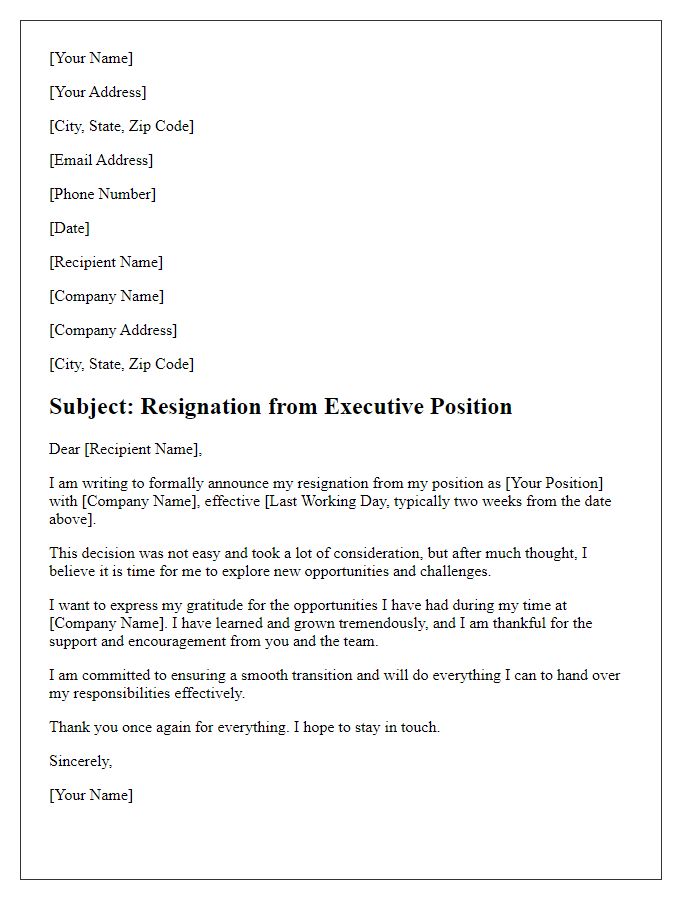Resigning from a leadership position can be a challenging decision, but it often opens the door to new opportunities and personal growth. Whether you're moving on to a different role or taking a step back for personal reasons, crafting a thoughtful resignation letter is key to leaving a positive impression. In this article, we will explore effective templates and tips for writing your resignation letter, ensuring that your message is both clear and respectful. So, if you're ready to take the next step in your career journey, read on to discover how to elegantly exit your leadership role!

Clear statement of resignation intention
The decision to resign from a leadership position requires careful consideration and a clear expression of intent. This voluntary departure can indicate a shift toward personal or professional growth, facilitating the transition for successors. A well-articulated resignation ensures transparency within an organization, allowing for an orderly handover of responsibilities. Effective communication during this process fosters respect and maintains relationships built during the tenure. Notably, mentioning a timeline for the transition aids in planning and reassures stakeholders of continued commitment until the leadership change is finalized.
Effective resignation date
A resignation from a leadership position can significantly impact organizational dynamics and future direction. The effective resignation date, often required to be provided in a resignation letter, typically allows for a transition period to prepare for the leadership change. This date may range from two weeks to several months, depending on company policy or the complexity of the role. Proper communication, including informing the board or stakeholders, typically occurs prior to the formal letter submission. Transition plans may include delegating responsibilities to interim leaders or outlining the search process for a successor.
Express gratitude for experiences and opportunities
A resignation from a leadership position involves a thoughtful reflection on past experiences and opportunities. Effective communication is essential. Thankful sentiments can highlight growth and development. Expressing appreciation for collaborative efforts promotes a positive atmosphere. Acknowledging influential moments can build lasting relationships. Emphasizing shared achievements can enhance connections within the organization. This step, undertaken respectfully, can contribute to a harmonious transition. Providing a brief explanation for leaving can maintain professionalism. Such communication can facilitate future networking opportunities, fostering goodwill among colleagues and stakeholders.
Offer assistance during transition
Resigning from a leadership position involves careful communication and support for a smooth transition. A resignation letter should start with a respectful greeting, stating the intention to resign from the leadership role, specifying the effective date, and expressing gratitude for the opportunities provided during tenure. Emphasizing willingness to assist during the transition period is crucial; mentioning specific ways to help could include preparing documentation, training successors, or being available for consultation. Sign off respectfully, ensuring a professional tone is maintained throughout the letter to leave a positive impression.
Reflect on achievements and team collaboration
Resigning from a leadership position can be a significant step. In this reflection, an individual might consider past achievements, such as successfully launching a major project, improving team productivity by 30% over a year, or fostering a collaborative environment that led to innovative solutions during quarterly brainstorming sessions. Highlighting the importance of team members, such as Jane Doe, whose exceptional data analysis skills contributed to securing a $500,000 grant, underscores the teamwork integral to these successes. Recognizing events like the annual company retreat that strengthened relationships, boosted morale, and set the stage for future collaborations may also be key aspects of this reflection. Ultimately, an expression of gratitude for the opportunity to lead and grow with such a talented group enhances the tone of the resignation.













Comments